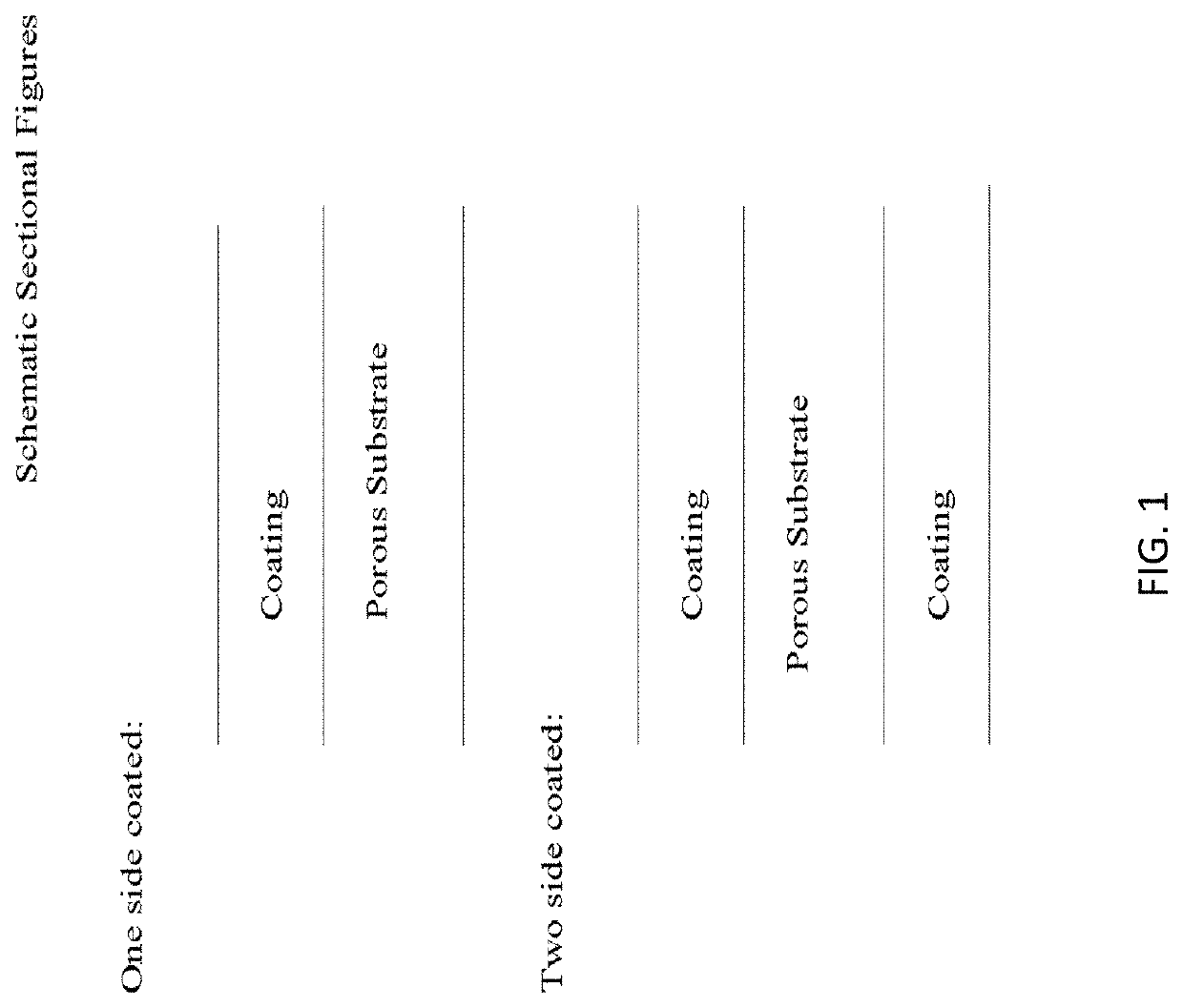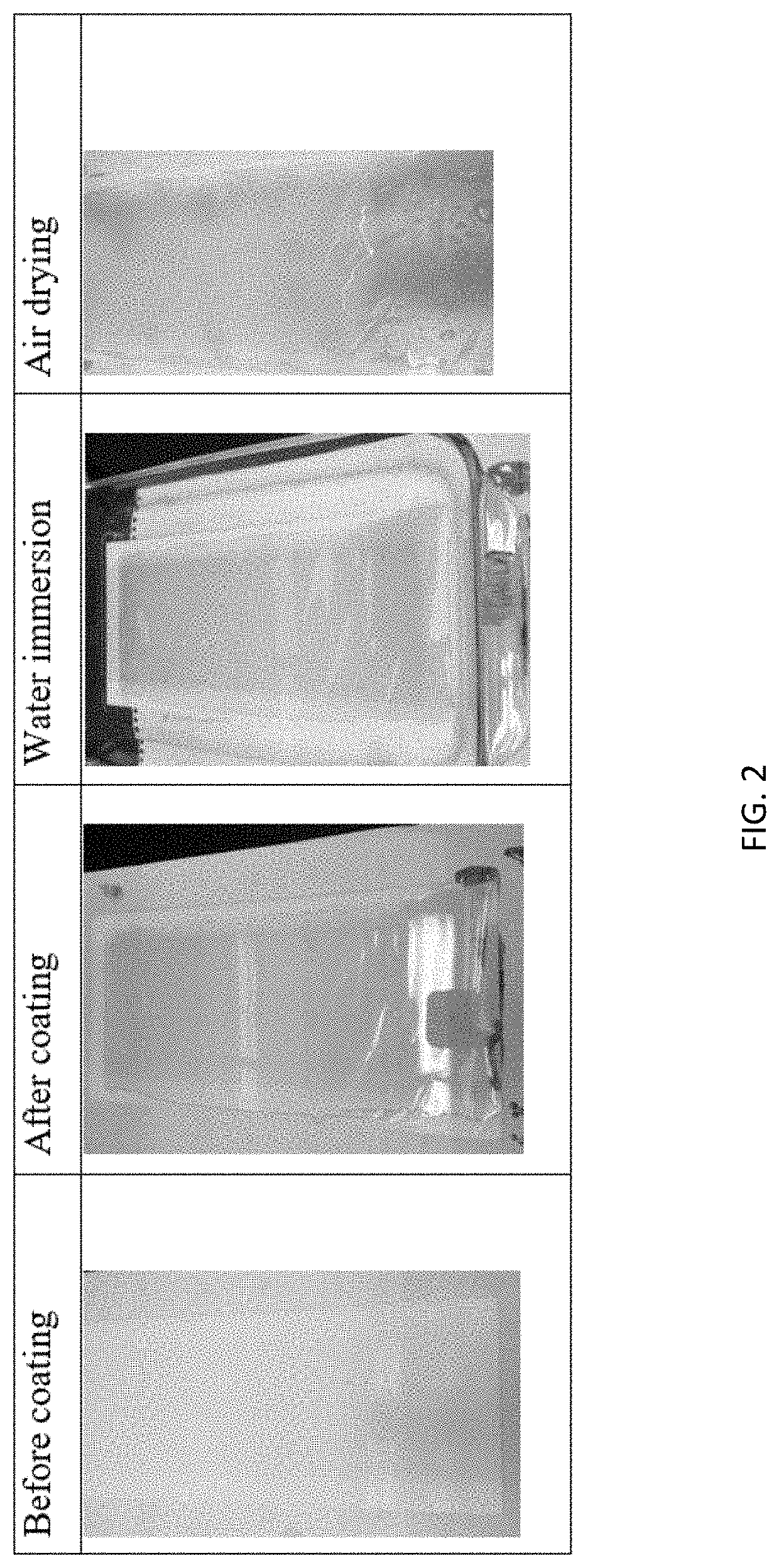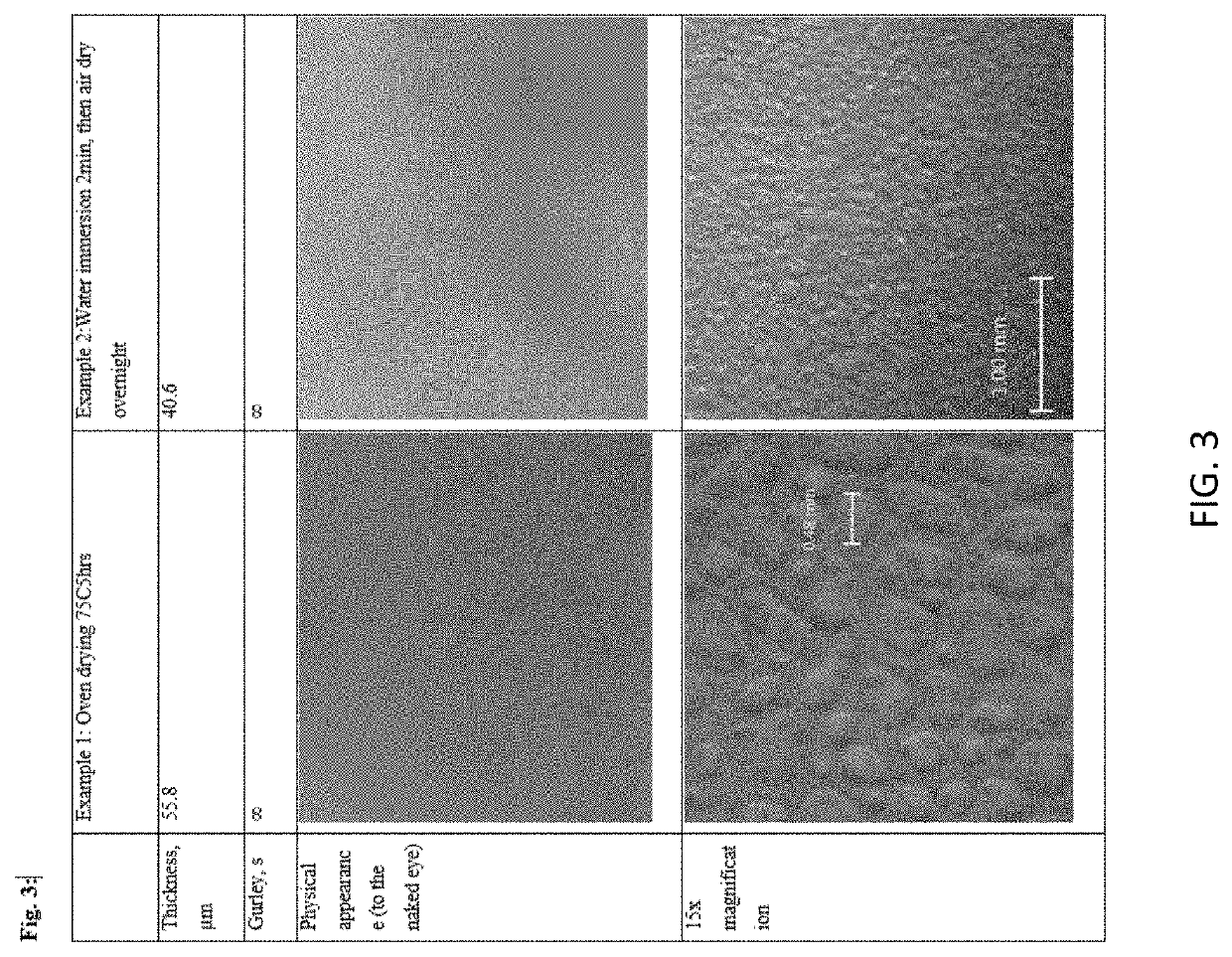Polyamide-imide coated separators for high energy rechargeable lithium batteries
a lithium battery, high-energy technology, applied in the direction of non-aqueous electrolyte accumulators, cell components, electrical equipment, etc., can solve the problems of affecting the commercial success of certain high-energy and high-voltage secondary or rechargeable lithium ion batteries, and affecting the operation of lithium batteries. , to achieve the effect of reducing shrinkage, high energy, and adding dimensional and/or mechanical stability
- Summary
- Abstract
- Description
- Claims
- Application Information
AI Technical Summary
Benefits of technology
Problems solved by technology
Method used
Image
Examples
examples 1 and 2
[0113]As a first step, a coating solution was prepared by combining a PVDF-HFP with less than 20% HFP and a polyamide-imide (Solvay Torlon) in NMP. The solution was amber but clear, which is surprising because typically polyimides and PVDFs are not miscible as demonstrated in the Comparative Example 2.
[0114]Next, the coating solution was coated onto one side of a porous polymeric base film. In this example, Celgard® 2500 PP base film was used. After coating, there are two ways to remove NMP. One is oven drying and other is NMP extraction with water bath followed by air drying. The later method is preferred as it is faster, effective and better membrane formation. FIG. 2 shows the entire lab coating process using water extraction process.
[0115]Two separate samples were produced using different NMP removing methods. The resulted Thickness of the separator (base film+coating) and Gurley (seconds) were measured, and appearance visually and at 15× magnification was determined. The result...
examples 3-5
[0116]Coating solutions were prepared like in Examples 1 and 2. In Examples 3 and 4 the ratio of PAI / PVDF is as shown in the Table in FIG. 4 below. In Examples 3-5, the coating was coated onto Celgard® 2500 as the base film. In each of Examples 3-5, the solvent (NMP) was removed using a water chasing method with overnight air dry. The immersion time was varied between 2 and 5 minutes. As shown in the Table in FIG. 4, the longer immersion time of 5 minutes produced a lower Gurley coating. It is believed that the ER of Example 4 will also be lower than that in Example 3, but it has not yet been measured. The Table in FIG. 4 also shows that a higher ratio of PAI / PVDF resulted in a lower ER film (compare Examples 3 and 5 with the same water immersion times) Comparative Example 1 shows the shrinkage and ER of an uncoated 2500 base film. ER of the coated films were measured by soaking coated films in the electrolyte for 1 hr to swell PVDF. SEMs of base film and coated base-film are provid...
PUM
| Property | Measurement | Unit |
|---|---|---|
| temperatures | aaaaa | aaaaa |
| pore size | aaaaa | aaaaa |
| porosity | aaaaa | aaaaa |
Abstract
Description
Claims
Application Information
 Login to View More
Login to View More - R&D
- Intellectual Property
- Life Sciences
- Materials
- Tech Scout
- Unparalleled Data Quality
- Higher Quality Content
- 60% Fewer Hallucinations
Browse by: Latest US Patents, China's latest patents, Technical Efficacy Thesaurus, Application Domain, Technology Topic, Popular Technical Reports.
© 2025 PatSnap. All rights reserved.Legal|Privacy policy|Modern Slavery Act Transparency Statement|Sitemap|About US| Contact US: help@patsnap.com



